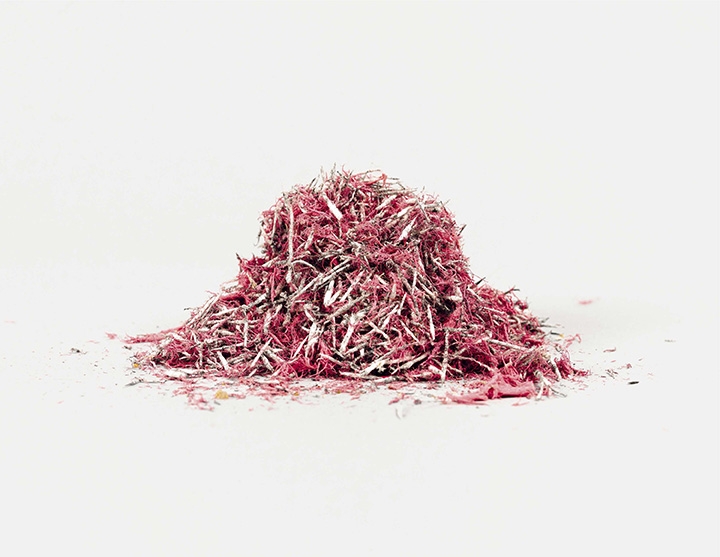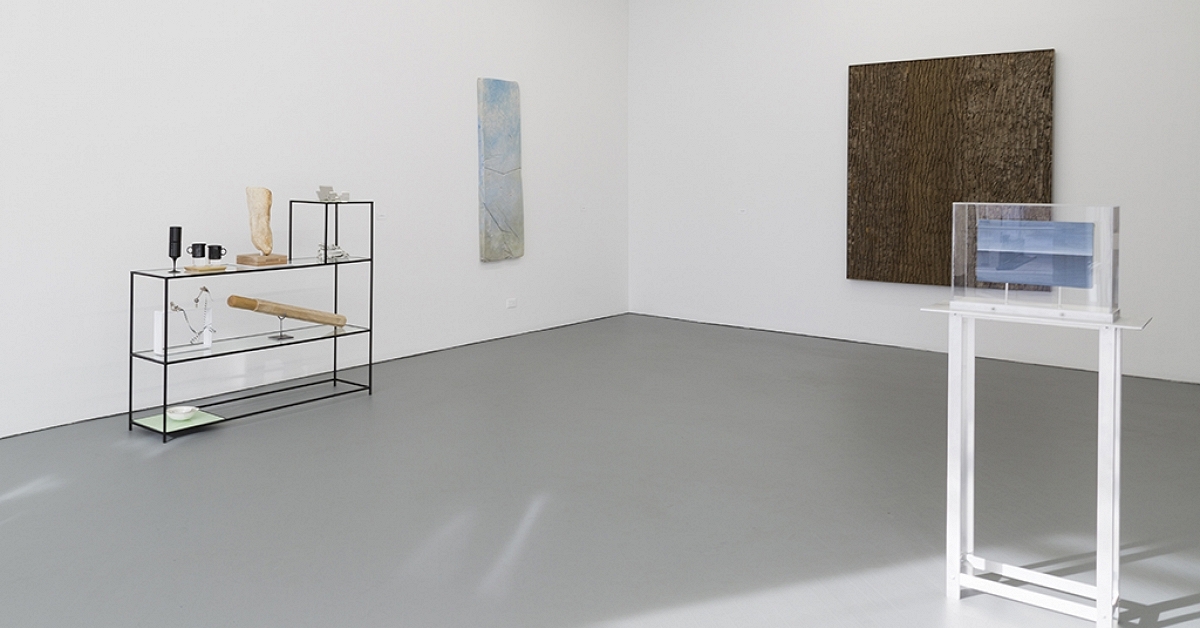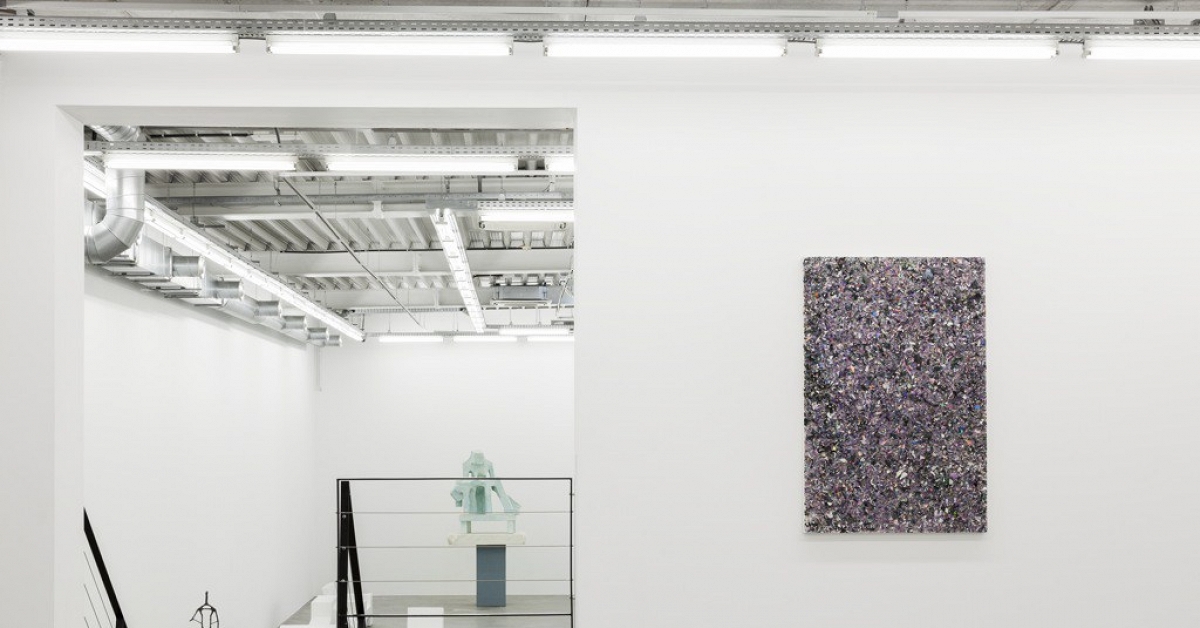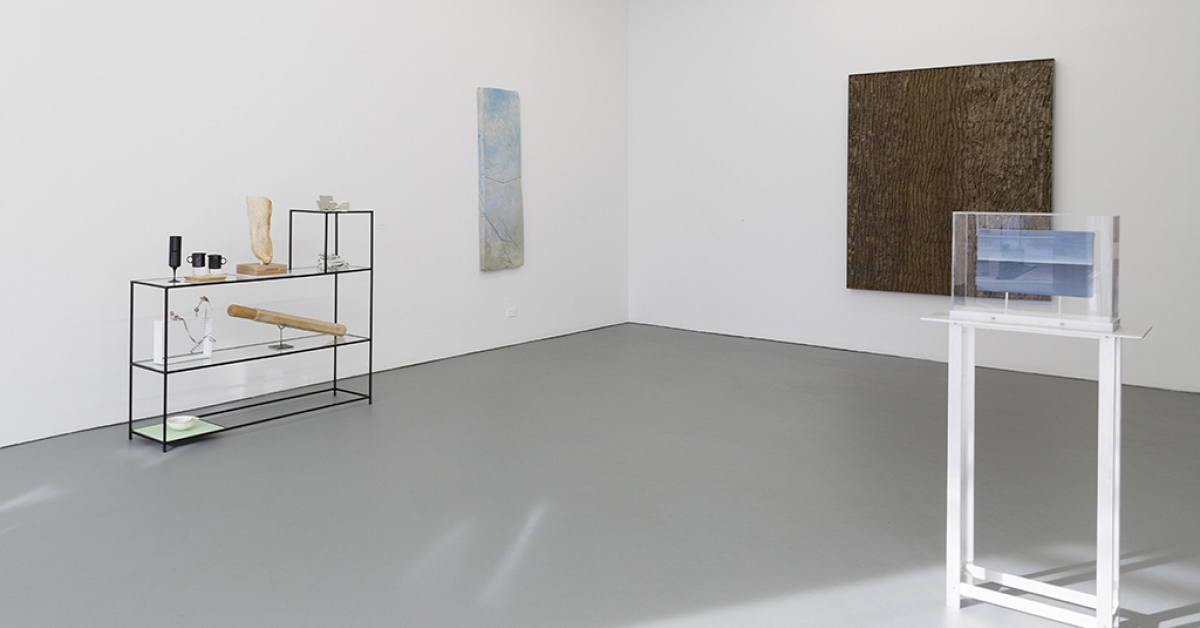Bethany Collins: An Artist Who Performs Historical Erasures
Modern Painters / Dec 19, 2015 / by Courtney Willis Blair / Go to Original

“I have to do a thing until it becomes painful,” says Bethany Collins, sitting in her enormous temporary studio at the MacDowell Colony in Peterborough, New Hampshire. Intended for a sculptor, the studio has vaulted ceilings that reach 12 feet. The walls are neatly covered with a mix of finished and in-progress pieces. Based in Atlanta, Georgia, Collins, 31, is one of two dozen residents and just beginning her six-week sojourn.
The evidence of pain is merely suggested within her work. Occasionally, it’s exposed through visual codes of repetition and mark-making, but otherwise it remains largely unseen. Her “noise” paintings are made by laboriously writing, erasing, and then rewriting lettering in pastel or chalk, a process reminiscent of a classroom punishment; the artist will re-create specific phrases until her fingers throb. The beginnings of a new set of works rest on cardboard on the concrete studio floor: blank paper drying from a bath in denim-colored dye, soon to be blue noise. Works from the “Dictionaries” series, diptychs of contronym definitions on thick American Masters paper, hang behind the “noise” paintings. Collins uses saliva and a Pink Pearl, Black Magic, or tan Chunky eraser to rub away aggressively at the printed definition, so only the opposing idioms remain. Her erasure sculptures, perhaps the most conceptual in her oeuvre, are made from the eraser residue, which she gathers into modest piles. They signal the complete removal of language, but, she says, “the essence of the thing remains. You just have to trust me—it’s there.”
The sculptures line a table next to a stack of books: Valeria Luiselli’s The Story of My Teeth, a copy of the New South journal from the 1970s, and a 1984 edition of The Southern Review. the last has already been dismantled. Its pages are filled with blocks of black text mixed with her frequent charcoaled fingerprints.
Collins consistently confronts invasive controlling language, particularly in historical and authoritative forms. The deliberate decision to push her body until it hurts speaks to how necessary she finds it to settle these encounters. Collins described this impulse in a talk with Nico Muhly during her residency at the Studio Museum in Harlem in 2014: “I’ve got to get this [language] back outside of my body. I have to figure out a way to let it go. It’s incredibly obsessive. I do it until my hand hurts, and then I’ve got to let that language go.” The pain that suffuses her art is relevant, given that Collins recognizes her practice is distinctly, if not directly, informed by her being an artist from the South. But, taking into account the image of old, white male that the term implies, the Montgomery, Alabama–bred Collins is decidedly not stereotypically Southern (though, she admits, “I do love a good bourbon”).
“When I moved to New York for my residency at the Studio Museum, I kept getting this question: What does it mean to be a Southern artist?” Collins recalls. “But when I explain the origin of the ‘The Southern Review’ series, it turns out that some people don’t understand Southern as describing just the white male body.”
That series began two years ago on a trip home, when Collins discovered a vintage selection of the literary journals established at Louisiana State University at a bookshop in Atlanta, and brought several editions from the 1980s back to Harlem. She began rendering parts of”¨the text barely legible by blacking it out with charcoal, leaving headlines, captions, and bylines visible. “I was imagining the Southern body,” she explains. “What does the Southern body look like outside myself? Some people tend to read the work as redacted, but to me, the pages feel richer, deeper.” Collins’s natural impulse to reject established social orders or systems of meaning and instead present an unnerving alternative quietly finds its foothold in several actions. The work acknowledges noise, and identifies that weighted language does not necessarily hold truth. There is also the deliberate act of silencing that noise, and the critical role of the body in this deconstruction.
Applying the same system she used in the “The Southern Review” series, A Pattern or Practice, 2015, which debuted in a solo exhibition at Chicago’s Richard gray Gallery this fall, is the first in her series of blind-embossed works. Collins initially set strict parameters for herself regarding historicity, working only with text and documents produced between 1950 and 1989. “My parents were born in the ’50s; I was born in the ’80s,” she notes. “I have a kind of ownership of that language.” But she found herself tackling the Ferguson Report: a 105-page document released earlier this year by the department of Justice after a six-month investigation into the city’s police department. “This was the first time I used a text that I didn’t have distance from,” she says. “That was really uncomfortable, but I didn’t want it to be necessary to have distance to be able to talk about an idea.”
Made up of 91 sheets, it’s hard on the eye. Stand too far back, and it looks like a marked wall of white, almost impenetrable, and gives the illusion of braille. “It creates this desire in the viewer to touch it,” she explains. “You want to feel your way through it. As factual as that report is, you still have to feel your way through it.” Government bodies have completed similar documents for the police departments in Baltimore and New Orleans, and Collins identified their precedents, such as the Kerner Commission Report from 1967, a look at the national race riots by the Lyndon Johnson–organized National advisory Commission on Civil disorders. But, she emphasizes, she was drawn to working with the Ferguson Report for specific reasons: “It was grappling with all these tentacles of language that I found fascinating and beautiful and difficult. That you can read a thing and understand what it’s talking about completely, that excites me.”
She’s begun thinking about how the series will continue. For a solo project at the Birmingham Museum of art, opening in April 2016, she’ll embark on a series of blind-embossed works that incorporate the front pages of the Birmingham News from the 1960s, when the editorial board established an in-house rule to bury civil rights stories inside the paper.
“The Ferguson Report that I did, it was the text that was painful,” Collins says. But with a nod to the deposits of violence in her own performative gestures of erasure, she adds, “here, it’s the absence of the text.”






